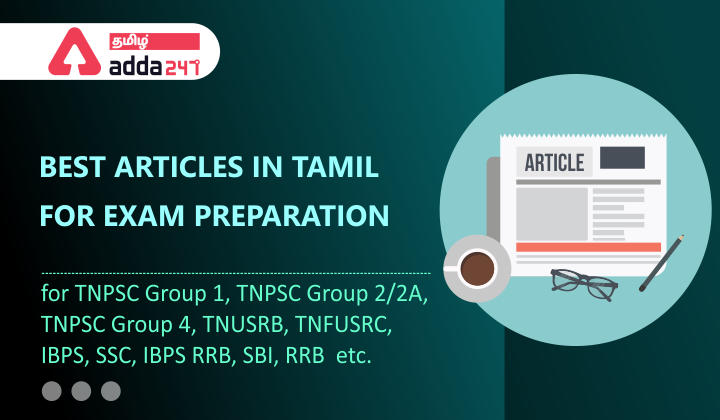Table of Contents
இணை ஒலிம்பிக் விளையாட்டுக்கள் அல்லது மாற்றுத் திறனாளர் ஒலிம்பிக் விளையாட்டுக்கள் (Paralympic Games) என்பது உடல் குறைபாடுள்ள விளையாட்டு வீரர்கள் பங்கேற்கும் முதன்மையான பன்னாட்டு பல் விளையாட்டு போட்டிகள் ஆகும். இணை ஒலிம்பிக் விளையாட்டுக்கள் உடலியக்கக் குறைபாடுகள் உள்ளோர், உறுப்பு நீக்கப்பட்டோர், கண் பார்வை குறைவுள்ளோர் மற்றும் பெருமூளை வாதம் உள்ளோர் போன்றவர்களுக்காக PARALYMPICS GAMES போட்டி நடத்தப்படும்.
Paralympics: An Overview (இணை ஒலிம்பிக் விளையாட்டுக்கள்: ஒரு பார்வை )

இணை ஒலிம்பிக் விளையாட்டுக்கள், உடற்குறை உள்ளவர்களுக்காக ஒலிம்பிக் விளையாட்டுக்களுடன் இணையாக நடத்தப்படுகின்றன. பன்னாட்டு ஒலிம்பிக் குழுவால் அங்கீகரிக்கப்பட்ட, உலக சிறப்பு ஒலிம்பிக் விளையாட்டுக்கள், அறிவுத் திறன் குறைபாடு உள்ளவர்களையும், கேள்குறை ஒலிம்பிக் விளையாட்டுக்கள், கேட்கவியலாத விளையாட்டாளர்களையும் சேர்த்துக் கொள்கின்றன. இணை ஒலிம்பிக் விளையாட்டுக்கள் குளிர்காலத்திலும் கோடைக்காலத்திலும், தொடர்புடைய ஒலிம்பிக் விளையாட்டுக்கள் நடந்த பின்னர், அதன் தொடர்ச்சியாக நடத்தப்படுகிறது. இந்தப் போட்டிகளை பன்னாட்டு இணை ஒலிம்பிக் குழு (IPC) கட்டுப்படுத்தி ஒழுங்குபடுத்துகிறது.
Read More: TOKYO OLYMPICS 2020
Paralympics: History (வரலாறு)

இணை ஒலிம்பிக் விளையாட்டுக்களின் துவக்கம் 1948ஆம் ஆண்டு பிரித்தானிய இரண்டாம் உலகப் போர் முதுவர்களின் சிறு சந்திப்பில் நிகழ்ந்தது. 1948ஆம் ஆண்டு ஒலிம்பிக் போட்டிகள் இலண்டனில் துவங்கிய அதே நாளில், உடல் குறையுடையோருக்கான முதல் அமைப்புசார் விளையாட்டுப் போட்டிகள் துவங்கப்பட்டன. இந்தப் போட்டிகளை, இசுடோக் மண்டெவில் மருத்துவமனையின் மருத்துவர் லுட்விக் கட்மான், தண்டுவடத்தில் காயப்பட்ட பிரித்தானிய இரண்டாம் உலகப் போர் முன்னாள் வீரர்களுக்காக ஏற்பாடு செய்தார். இந்த முதல் போட்டிகள் உலக சக்கர நாற்காலி மற்றும் உறுப்பிழந்தோர் விளையாட்டுக்கள் என அழைக்கப்பட்டன. படிப்படியாக முன்னேறி இருபத்தொன்றாம் நூற்றாண்டின் மிகப்பெரும் பன்னாட்டு விளையாட்டுப் போட்டிகளில் ஒன்றாகத் திகழ்கிறது.
ALL OVER TAMILNADU TNPSC GROUP 4 MOCK EXAM 28th AUG 2021 12pm- GENERAL TAMIL 100 MARK- REGISTER NOW
Paralympics: India’s Journey (இந்தியாவின் பயணம்)

- மாற்றுத்திறனாளிகளுக்கான உலகின் சிறந்த விளையாட்டு தளமான இணை ஒலிம்பிக் விளையாட்டுக்களில், பல பாராலிம்பிக் வீரர்கள், இந்தியாவிற்கு விருதுகளை பெற்று தந்துள்ளனர். ஒரு சில இணை-தடகள வீரர்கள், இணை ஒலிம்பிக் பதக்கங்களை வென்று உலக சாதனைகளை படைத்துள்ளனர்.
- இணை ஒலிம்பிக்கில் இந்தியாவின் பயணம், 1968 ஆம் ஆண்டு நடந்த விளையாட்டுகளில் தொடங்கியது. இந்தியா 1976 மற்றும் 1980 ஆண்டிற்கான பதிப்புகளில் பங்கேற்கவில்லை, ஆனால் அது தவிர 1968 ஆம் ஆண்டு முதல் நடந்த ஒவ்வொரு இணை ஒலிம்பிக் விளையாட்டின், ஒரு பகுதியாக இருந்து வந்துள்ளது.
- ரோமில் நடந்த முதல் இணை ஒலிம்பிக் விளையாட்டுக்களில், 18 நாடுகளில் இருந்து 209 விளையாட்டு வீரர்கள் பங்கேற்றனர். ஆனால் 1960 மற்றும் 1964 நிகழ்வுகளில் இந்தியா பங்கேற்கவில்லை.
- 1968 இல் இஸ்ரேலின், டெல் அவிவ் நகரில் நடந்த இணை ஒலிம்பிக்கில், இந்தியா முதன் முதலில் பங்கேற்றது.
- எட்டு ஆண்கள் மற்றும் இரண்டு பெண்களை உள்ளடக்கிய இந்திய குழுவின் ஒரு பகுதியாக, மொத்தம் 10 விளையாட்டு வீரர்கள் போட்டிக்கு அனுப்பப்பட்டனர். எவ்வாறாயினும், விளையாட்டுகளில் எந்தப் பதக்கமும் வெள்ளாமல், இந்திய அணி நாடு திரும்பியது.
- நான்கு ஆண்டுகளுக்குப் பிறகு 1972 ஆம் ஆண்டு, ஜெர்மனியில் நடந்த ஹைடெல்பெர்க் இணை ஒலிம்பிக் விளையாட்டுப் போட்டியில், இந்தியா முதல் பதக்கத்தை வென்றது. பாரா-நீச்சல் வீரர் முரளிகாந்த் பெட்கர் 50 மீட்டர் ஃப்ரீஸ்டைல் நீச்சல் போட்டியில் தங்கப் பதக்கம் வென்று, 37.331 வினாடிகளில் உலக சாதனை படைத்தார்.
- இருப்பினும், விளையாட்டுப் போட்டிகளில் இந்தியா பெற்ற ஒரே பதக்கம் ஆகும். இது 42 பங்கேற்கும் நாடுகளின் ஒட்டுமொத்த பதக்கப் பட்டியலில், இந்தியா 24 வது இடத்தைப் பிடிக்க உதவியது.
- 1972 ஆம் ஆண்டில் இணை ஒலிம்பிக்கில், இந்தியா முதல் தங்கத்தை வென்று, தனது இடத்தை நிலைநாட்டிய பின்பு, 1976 மற்றும் 1980 போட்டிகளில் இந்தியா பங்கேற்கவில்லை. அது அடுத்ததாக 1984 ஆம் ஆண்டு பங்கேற்றது.
Read More: INDIA IN THE OLYMPICS FROM 2000
Paralympics: The six disability Groups(ஆறு ஊனநிலை பகுப்புகள்)
மாற்றுத் திறனாளிகளின் பரந்த வகைகளைக் கணக்கில் கொண்டு, பல பகுப்புகளில் போட்டியாளர்கள் பங்கேற்கின்றனர். அனுமதிக்கப்பட்ட பகுப்புகளாக, ஆறு பரந்த பகுப்புகளில் போட்டியாளர்கள் வகைப்படுத்தப்படுகின்றனர்.
- உறுப்பிழந்தோர் (Amputee)
- பெருமூளை வாதம் (Cerebral Palsy)
- அறிவுத்திறன் குறைபாடு (Intellectual Disability)
- சக்கரநாற்காலி (Spinal Injuries)
- பார்வைக் குறைபாடு (Visually Impaired)
- லெ ஆதெர்சு (Les Autres, பொருள் “பிறர்” – இந்த ஐந்து பகுப்புகளில் அடங்காதவர்கள்)
இந்தப் பகுப்புகள் விளையாட்டைப் பொறுத்து, மேலும் பல வகைபாடுகளாகப் பிரிக்கப்படுகின்றன.
ADDA247 தமிழின் இந்த பகுதியில் நாம் TNPSC குரூப் 1, 2/2A தேர்வுகளுக்கு தேவைப்படும் முதன்மை தேர்விற்கான கட்டுரைகளும் பிற RRB,SSC தேர்வுகளுக்கான கொள்குறி வினாக்களுக்கு தேவையான விஷயங்களும் பார்ப்போம்.
இது போன்ற தேர்விற்கு பயன்படும் கட்டுரைகளை பெற ADDA247 தமிழ் செயலியை பதிவிறக்கம் செய்க
Download the app now, Click here
*****************************************************
Use Coupon code: DREAM(75% OFFER)

*இப்போது உங்கள் வீட்டில் தமிழில் நேரடி வகுப்புகள் கிடைக்கின்றன*
*பயிற்சி மட்டுமே தேர்வுர உங்களுக்கு உதவ முடியும் | Adda247 தமிழ் மூலம் உங்கள் பயிற்சியை இப்போது தொடங்கவும்*
Adda247App | Adda247 Tamil Youtube
Adda247 Tamil telegram group –Tnpsc sure shot selection group



